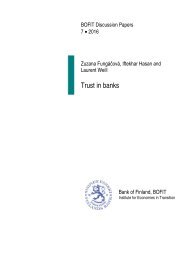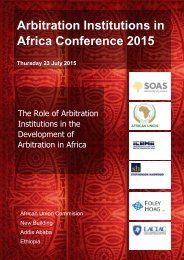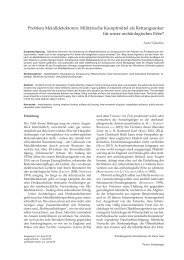Media and Minorities
9783666300882_ruhrmann_media_ebook_034247
9783666300882_ruhrmann_media_ebook_034247
You also want an ePaper? Increase the reach of your titles
YUMPU automatically turns print PDFs into web optimized ePapers that Google loves.
28<br />
Augie Fleras<br />
the media picture as normal or unexceptional whereas visible minorities find<br />
themselves racialized <strong>and</strong> excluded by discursive frames that prejudge without<br />
the prejudice.<br />
Whitewashing Mainstream <strong>Media</strong> as White Ethnic <strong>Media</strong><br />
All mass media content could be analyzed from the experience of what is revealed<br />
about ethnicity. The New York Times, for example, could be read as an ethnic newspaper<br />
although it is not explicitly or consciously so.37<br />
A truism in communication studies is the tacitly assumed distinction between<br />
mainstream newsmedia <strong>and</strong> ethnic newsmedia. Mainstream media<br />
consist of those private (commercial) or public-service outlets that cater to the<br />
widest affluent audience. They are relatively large scale in operation; reach,<br />
i. e., they produce content for a generalized other; position themselves near<br />
the middle in terms of bias <strong>and</strong> use a mainstream language as a medium of<br />
communication. By contrast, ethnic media are thought to target specific ethnic<br />
minorities by providing information that is community based <strong>and</strong> culturally<br />
sensitive as well as responsive to <strong>and</strong> situationally located within a<br />
trans national field of information.38 Ethnic media are thought to differ from<br />
mainstream media because of content that is about, <strong>and</strong> produced, distributed<br />
<strong>and</strong> consumed by migrants, minorities <strong>and</strong> peoples in a language or cultural<br />
idiom that resonates with their experiences <strong>and</strong> interests. Yet this divide<br />
is problematic. How, for example, ought one categorize global media giants<br />
such as Al Jazeera with its 50 million viewers worldwide: ethnic or mainstream?<br />
Where exactly do mainstream media end <strong>and</strong> ethnic media begin,<br />
given that ethnic media are becoming more mainstream in their operations,<br />
whereas mainstream media are tapping into ethnic media niches to engage<br />
with new audiences?<br />
Both ethnic <strong>and</strong> mainstream newsmedia share commonalities at one level.<br />
They both include process (involving the targeting of a preferred demographic),<br />
imperatives (relying on advertising <strong>and</strong> subscriptions for survival),<br />
37 Stephen Riggins, ed., Ethnic Minority <strong>Media</strong>. An International Perspective (Newbury<br />
Park: Sage, 1992), 2.<br />
38 Karim H. Karim, The <strong>Media</strong> of Diaspora (New York: Routledge, 2003); Georgiou, “<strong>Media</strong><br />
Representations of Diversity”; Murray, Not Another Solitude; Matthew D. Matsaganis,<br />
Vikki S. Katz, <strong>and</strong> S<strong>and</strong>ra J. Ball-Rokeach, Underst<strong>and</strong>ing Ethnic <strong>Media</strong>. Producers, Consumers,<br />
<strong>and</strong> Societies (California: Sage, 2010); Larrazet <strong>and</strong> Rigoni, “<strong>Media</strong> <strong>and</strong> Diversity”;<br />
Clare Johansson <strong>and</strong> Simone Battiston, “Ethnic Print <strong>Media</strong> in Australia,” <strong>Media</strong><br />
History 20, no. 4 (2014): 416–430.<br />
© 2016, V<strong>and</strong>enhoeck & Ruprecht GmbH & Co. KG, Göttingen<br />
ISBN Print: 9783525300886 — ISBN E-Book: 9783666300882







